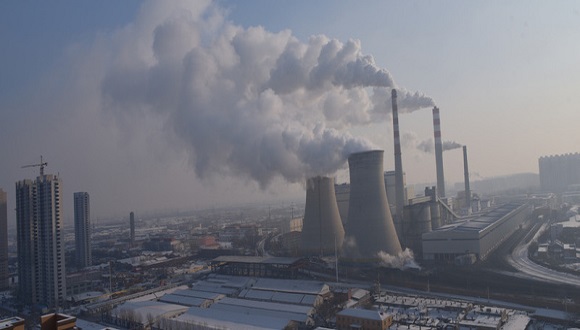

Despite the moderate rebound in temperatures across most regions of China after late December’s deep-freeze, thermal coal prices in the country’s spot market have touched a new high this week from the combination of continued tight coal supplies and roaring energy demand.
As of January 19, Mysteel’s price assessment for 5,500 kcal/kg Shanxi blend thermal coal had soared by another Yuan 110/tonne ($17/t) on week to Yuan 1,045/t at Qinhuangdao port in North China’s Hebei province, the highest since Mysteel launched the data series in December 2008. The price increase had accelerated since last month when cold waves started to hit the country.
Over 80% of steaming coal demand from Chinese end-users is supplied under medium- or long-term contracts and currently priced at around Yuan 540-550/t. The balance is sourced via the spot market, Mysteel Global understands.
“I never expected that spot coal prices would rise above the Yuan 1,000/t level,” commented a trader in Shanghai.
Although electricity demand for household use has eased slightly of late as daytime temperatures have warmed, the country is still stuck in a tough period for coal supply that may last until the end of January, commented an industry source in North China.
“There are many vessels at ports in Bohai Bay in North China awaiting coal loading. They will need to wait for one or two more weeks before they can depart to eastern or southern China, as now the port stocks are low,” he explained. Ports in Bohai, including Jingtang, Qinhuangdao and Huanghua in North China, are China’s core conduit for coal transhipment from coal mining regions in North and Northwest China to end-users in East and South China, Mysteel Global noted.
The resurgence of the COVID-19 pandemic in North China’s Hebei close to Bohai Bay is posing another challenge for steady coal supply. Local coal deliveries have been affected by virus containment measures including truck transportation regulations, he noted, adding that the spot coal price will likely keep climbing to above Yuan 1,100/t.
For example, Yulin city in Northwest China – a key region for thermal coal mining in the country – has ordered all truck drivers to provide negative results for COVID-19 tests taken within three days of the trucks arriving in the city for coal loading. Also, truck drivers from regions regarded by the authorities as high- and medium-risk areas for the pandemic must undergo a 14-day quarantine period, according to a government release on January 18.
As of 0:00 January 19, four regions had been temporarily identified as being at high risk from the pandemic, among which are Shijiazhuang city and Xingtai city in Hebei province. The number of medium-risk areas totalled 60 as of Tuesday, among which 36 are in Hebei, according to official information.
Meanwhile, the low temperatures in North China have also adversely impacted coal unloading from rail wagons to ports, said a Shanghai-based market watcher. “The whole logistics cycle for coal transportation – via wagons to ports, unloading and then wagons returning to mining regions to be loaded again – has been extended,” he said. “Due to the low temperatures, coal readily freezes to the wagons so these days additional manual force is needed to remove all coal from trains,” he explained.
Central and local government authorities have noted the sustained supply tightness of coal and have been adopting measures to secure the country’s energy supply, Mysteel Global notes.
For example, China’s National Development and Reform Committee (NDRC) noted in a conference on January 13 that domestic coal miners and gas field workers must be encouraged to work to the fullest extent possible without jeopardising safety. Also, the country’s electricity generators are to be prepared for high power consumption loads, according to an NDRC release on January 15. China’s Customs has also shortened the clearance period for imported coal to ease domestic supply pressure. During last December alone, the country’s thermal coal imports surged by 27.3 million tonnes on month to 39.1 million tonnes, according to the Customs data, making for the fastest on-month increase on record. Domestic bookings for thermal coal from Indonesia, China’s largest source of steaming coal imports, remained firm in January, while the country’s Australian coal procurement remained in a lull, Mysteel Global understands.
Written by Sean Xie, xiepy@mysteel.com
Edited by Russ McCulloch, russ.mcculloch@mysteel.com













